Tabernacolo, Altare e reliquia San Pio

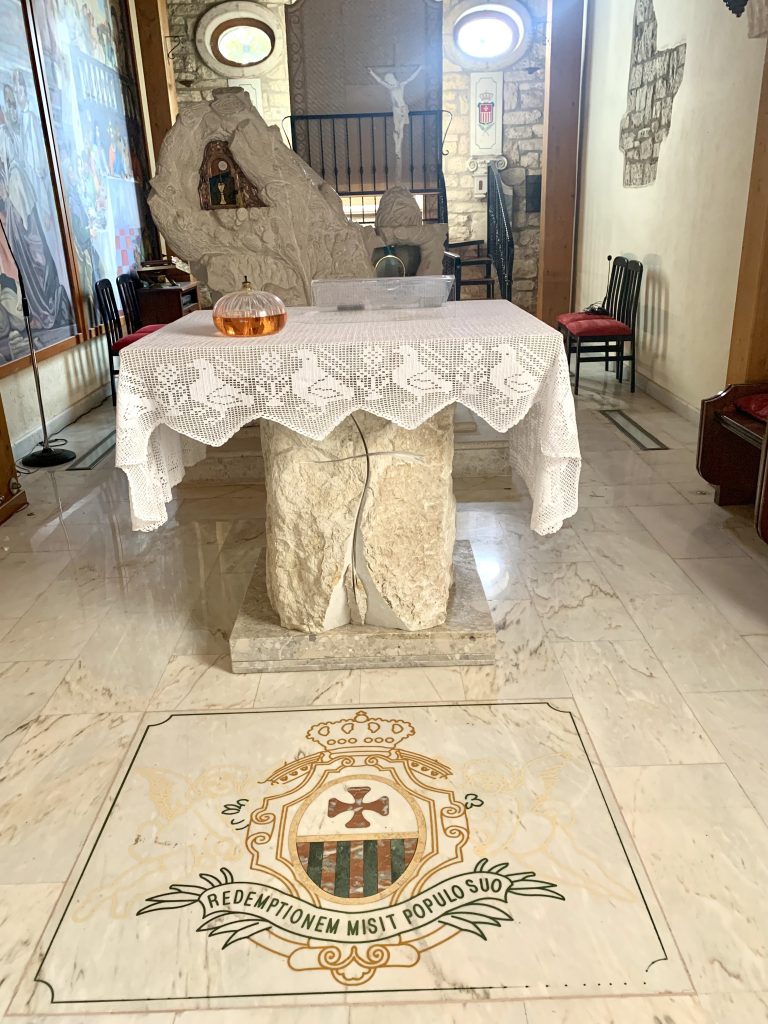
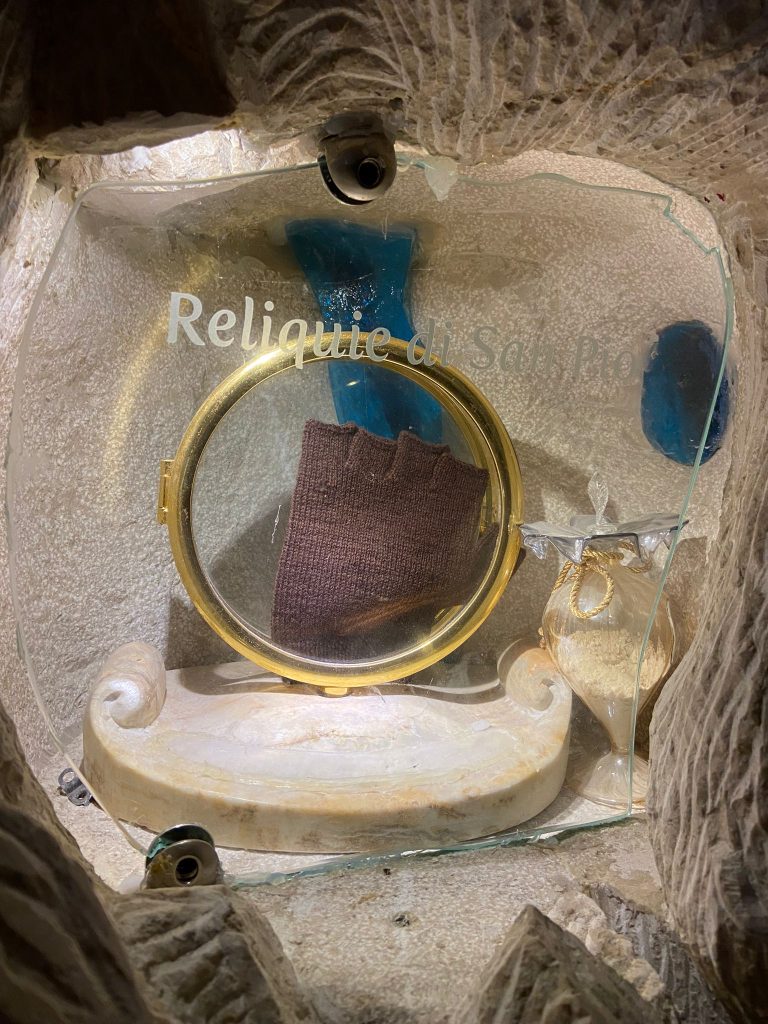
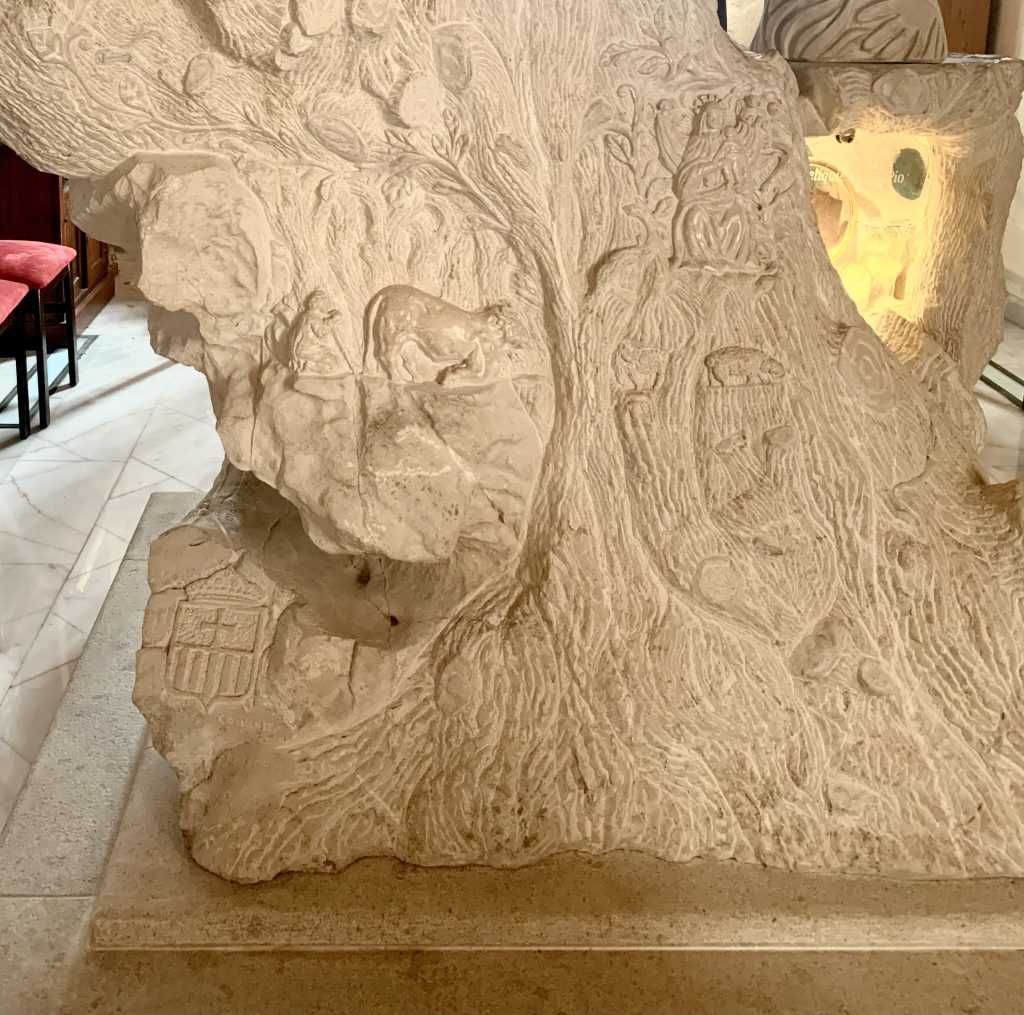
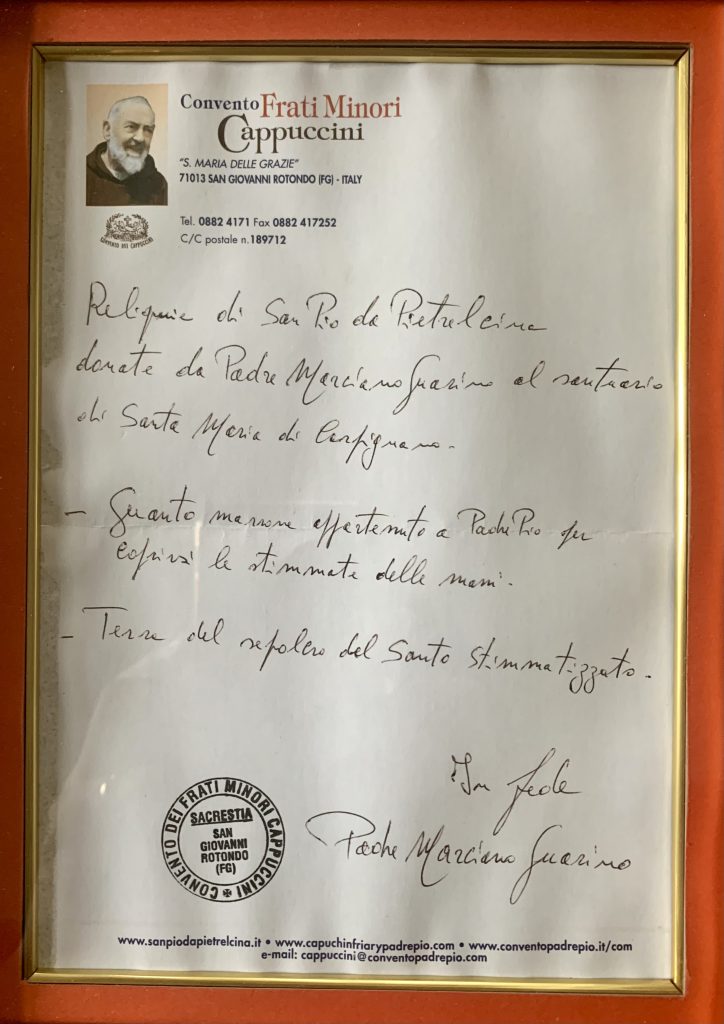
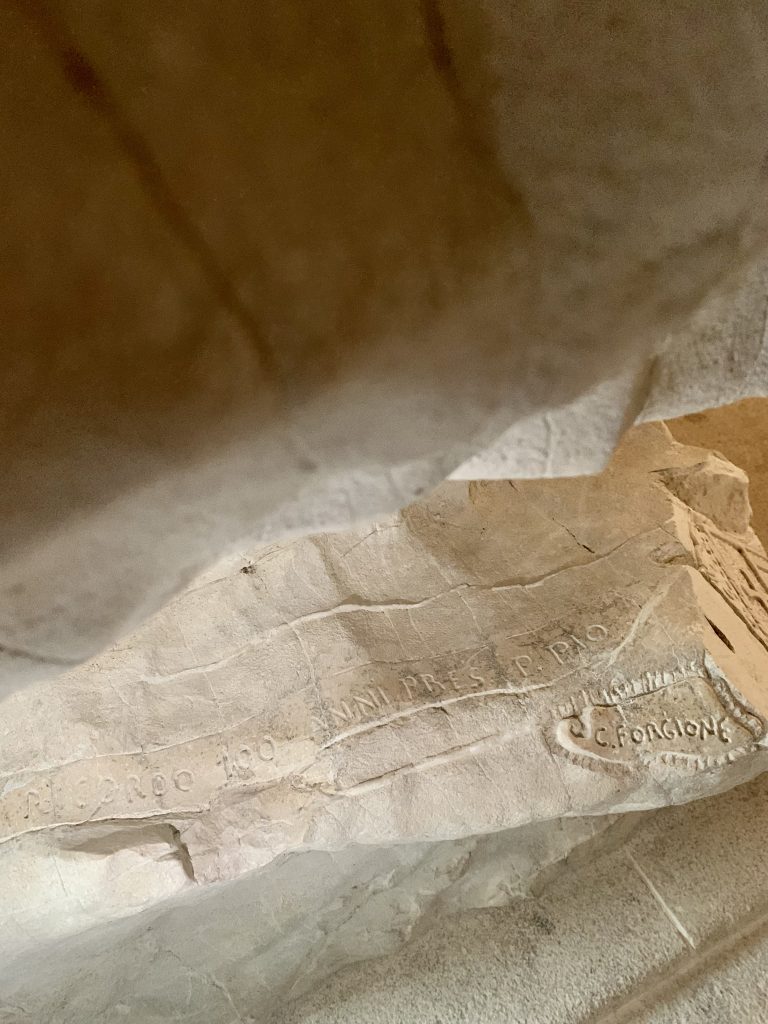
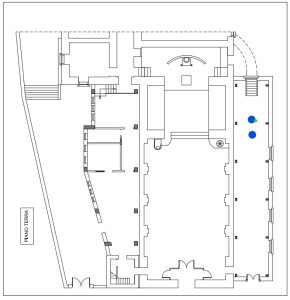

Parrocchia Santuario Maria SS. di Carpignano
Altare e TabernacoloClaudio Forgione
Sec. XXI
Breccia irpina
Reliquia San Pio da Pietrelcina

Parish Sanctuary SS. Maria of Carpignano
Altar and Tabernacle
Claudio Forgione
XXI century
Irpinan breach
Relic of St. Pio of Pietrelcina
All’interno della cappella si trova un altare e un basamento scultoreo per l’alloggio del Tabernacolo e la reliquia di San Pio da Pietrelcina. Le opere sono state realizzate su un masso proveniente da Pietrelcina e lavorato dallo scultore Claudio Forgione, che ha voluto rappresentare la radice e il tronco del carpino su cui sarebbe stata ritrovata la venerata tavola dipinta della Madonna di Carpignano. L’opera è impreziosita da un basso rilievo che racconta la scena del ritrovamento e, in basso, si distingue nettamente la scena raffigurante il quadro fra i rami e il bue inginocchiato, accompagnato da un giovane pastorello.
Nel ceppo marmoreo è presente una nicchia illuminata e protetta da un vetro, dove trova alloggio la preziosa reliquia del guanto di San Pio da Pietrelcina. La reliquia fu consegnata, il 29 agosto del 2009, nelle mani del parroco Padre Antonio Venuta da parte di Padre Marciano Guarino, cappuccino di Grottaminarda e gran devoto della Madonna di Carpignano, che alcuni anni dopo arricchì la nicchia con un’ulteriore reliquia, una ampolla di vetro soffiato contenente polvere del Santo, recuperate al momento dell’esumazione.
Nel lontano novembre del 1909, il giovane fr. Pio da Pietrelcina, ancora studente nella vicina Gesualdo, venne in visita al Santuario per pregare ai piedi della Madonna di Carpignano. Tale episodio è ben rappresentato in un grande quadro a destra dell’ingresso alla cappella.
L’attuale cappella in legno e muratura in pietra è stata ultimata nel 2009, su disegno e direzione dei lavori dell’Ing. Antonio Michele Uva di Carpignano. Al suo posto, nel 1859, esisteva una costruzione a due piani, prima usata a piano terra come sacrestia e al piano rialzato come deposito di foraggio per gli animali da trasporto e poi come abitazione dei religiosi. In seguito al terremoto del 1980, tale costruzione andò distrutta e demolita e non più ricostruita per mancanza di fondi. Tuttavia, grazie all’interessamento di Padre Antonio Venuta, alla generosità dei fedeli e alla collaborazione di una devota e graziata famiglia di Caserta, è stata poi realizzata la cappella che, sul fondo, ospita una rampa di scale che scende verso un’antica cripta del Santuario, dove scorre una fonte d’acqua e luogo scelto per celebrare rituali battesimali.
Sempre all’interno della cappella, su tutto il lato sinistro, trovano alloggio le tele dipinte dall’artista Tullio De Franco, fino al 2009 collocate in chiesa.
S.B.
Inside the chapel there is an altar and a sculptural base for housing the Tabernacle and the relic of Saint Pio of Pietrelcina. The works were made on a boulder from Pietrelcina and done by the sculptor Claudio Forgione, who wanted to represent the root and trunk of the hornbeam on which the venerated painted panel of the Madonna of Carpignano would have been found. The work is embellished with a low relief that tells the scene of the discovery and, below, the scene depicting the painting among the branches and the kneeling ox, accompanied by a young shepherd boy.
In the marble block there is an illuminated niche and protected by a glass, where the precious relic of the glove of San Pio da Pietrelcina is placed. The relic was delivered, on 29th August 2009, in the hands of the parish priest Father Antonio Venuta from Father Marciano Guarino, Capuchin of Grottaminarda and great devotee of the Madonna of Carpignano, who a few years later enriched the niche with another relic, an ampoule of blown glass containing the Saint’s powder, recovered at the time of exhumation.
Back in November 1909, the young friar Pio da Pietrelcina, still a student in the nearby Gesualdo, came to visit the Sanctuary to pray at the foot of the Madonna of Carpignano.
This episode is well represented in a large painting to the right of the entrance to the chapel.
The current chapel in wood and stone was completed in 2009, based on a design and management of the works of the Inge. Antonio Michele Uva of Carpignano. In its place, in 1859, there was a two-story building, previously used on the ground floor as a sacristy and on the mezzanine as a forage depot for transport animals and then as a home for the religious. Following the earthquake of 1980, this building was destroyed and demolished and not rebuilt anymore due to lack of funds. However, thanks to the interest of Father Antonio Venuta, to the generosity of the faithful and to the collaboration of a devoted and graced family of Caserta, the chapel was then built which, at the bottom, houses a flight of stairs that descends towards an ancient crypt of the Sanctuary, where a source of water flows and a place chosen to celebrate baptismal rituals.
Still inside the chapel, on the entire left side, the painted canvases by the artist Tullio De Franco are housed, placed in the church until 2009.
Sonia Bruno
